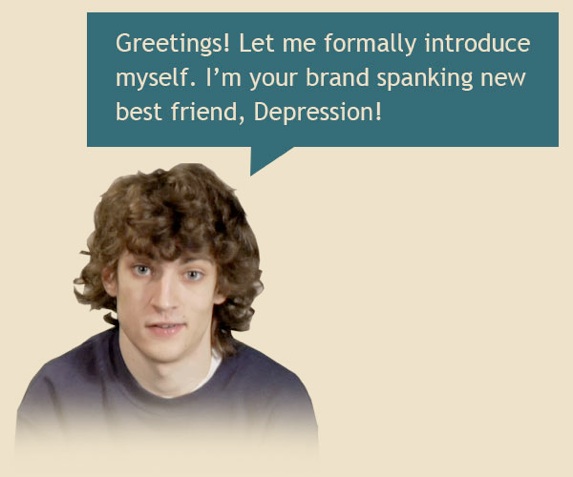Latest Public Service Radio Minute
Loss of EmploymentLoss of Employment, MP3, 1.3MB
Listen to or download all our PSAsSupport Our Work
Please donate so we can continue our work to reduce the stigma of psychiatric illness, encourage research, and support educational activities for behavioral health professionals and the public. Ways you can donate and help are on our Support and Donations page. Thank you!
More InfoLatest News Around the Web
Advocates Urge Virginia Governor To Intervene In Case Of Inmate With Autism
The AP (1/4, O’Dell) reports that advocates for civil liberties and mental health issues “are urging Gov. Terry McAuliffe [D-VA] to intervene in the case of a Virginia inmate with autism who faces trial Wednesday for allegedly assaulting a correctional officer.” Attorneys and supporters of Reginald “Neli” Latson maintain that “he needs treatment, not punishment, for intellectual disabilities that they say have caused his three clashes with law enforcement since 2010.” The governor has been asked “to grant conditional clemency so Latson can be moved to a secure treatment facility in Florida that has agreed to accept him.”
Related Links:
— “MENTAL HEALTH ADVOCATES SEEK RELIEF FOR AUTISTIC VA. INMATE,” Larry O’Dell, Associated Press, January 4, 2015.
Brochure Addresses Strategies For Maintaining Cognitive Health
The Washington Post (1/1, Kunkle) reported that a brochure developed using research from the Administration for Community Living, the NIH, and CDC “pulls together resources for maintaining one’s cognitive health.” The brochure, “Brain Health: You Can Make a Difference,” is part of a campaign that focuses on a holistic approach to managing personal health.
National Association of Area Agencies on Aging Chief Executive Sandy Markwood said of the initiative, “what we looked at are what are the practical things you can do to positively impact that. … No matter what age we are, but particularly as you’re growing older, these are things that often get discounted, but quite the contrary, are things people should focus on.”
Related Links:
— “How to keep your brain healthy in 2015 and beyond,” Fredrick Kunkle, Washington Post, December 31, 2014.
Studies: Early Intervention May Change Nature Of Schizophrenia
USA Today (1/1, Szabo) ran, as part of its “The Cost of Not Caring” series, a long-form version of its report on new programs intended to help young people with schizophrenia successfully cope with a psychotic break and prevent further decline. Thomas Insel, MD, director of the National Institute of Mental Health, said “first episode” programs “aim to change the trajectory of schizophrenia from one of tragic decline to one of a chronic but manageable condition.”
He added that studies “suggest that early intervention can halt the deterioration so often seen in schizophrenia, allowing young people to get their lives back on track after their first full break with reality.” The National Institutes of Health is “testing early intervention through a major study called RAISE, or Recovery After an Initial Schizophrenia Episode. The study has generated enormous excitement across the mental health world, even before its results have been released.”
Related Links:
— “Early intervention could change nature of schizophrenia,” Liz Szabo, USA Today, December 31, 2014.
FDA Approves App To Assess Traumatic Brain Injuries
Health Data Management (12/31, Slabodkin) reports that FDA has approved an app for the US military, called the Defense Automated Neurobehavioral Assessment (DANA), which is meant to “help clinicians diagnose cases of traumatic brain injury in as little as five minutes in almost any setting, including forward-deployed combat environments.” DANA functions like a video game in that “service members perform a series of baseline on-screen exercises during which both their speed and accuracy are recorded.” Some factors that “may affect reaction time include concussion, dementia, post-traumatic stress, depression and fatigue.”
Related Links:
— “FDA Approves Defense Mobile App for Traumatic Brain Injuries,” Greg Slabodkin, Health Data Management, December 30, 2014.
Children With A Parent Who Has Attempted Suicide May Have Increased Risk Of Attempting Suicide Themselves
HealthDay (12/31, Mundell) reports that according to a study published online Dec. 30 in JAMA Psychiatry, a parent’s history of attempting suicide appears to raise “the odds of a suicide attempt in their child…fivefold.” After following some “700 young and adult-aged children (ages ranged from 10 to 50) of 334 parents with mood disorders, such as depression or bipolar disorder,” researchers discovered that “a history of suicide attempts in a child was strongly associated with a similar history in that child’s parent – even after they accounted for any mood disorder that might be shared by both parent and child.”
Related Links:
— “Parent’s Suicide Attempt Makes Child’s Much More Likely: Study,” E.J. Mundell, HealthDay, December 30, 2014.
Foundation News
Nothing Found
It seems we can’t find what you’re looking for. Perhaps searching can help.

